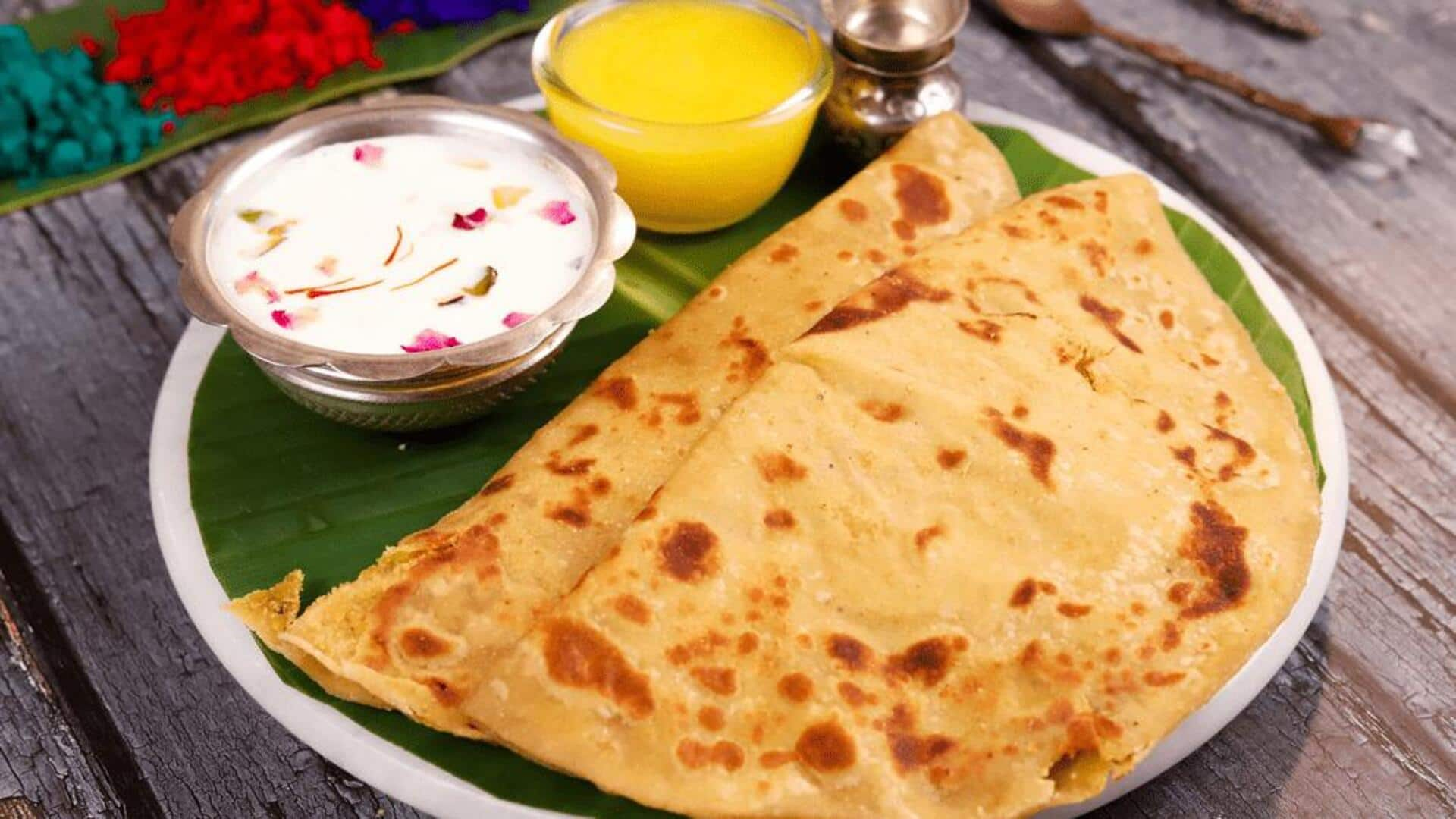
The spirited sojourn of puran poli's sweet celebrations
What's the story
Puran poli is a traditional Indian sweet flatbread that has been a part of the subcontinent's culinary landscape for centuries. Originating from the Indian states of Maharashtra and Gujarat, it has found its way into the hearts and kitchens of various other regions, each adding its unique twist to the recipe. This article delves into the history, regional variations, cultural significance, and preparation tips of this beloved dish.
History
A journey through time
Puran poli traces its roots to ancient India, where it was held in high esteem as a special treat during major festivals and religious celebrations. Historical records and scriptures mention its enjoyment by both royalty and common folk, highlighting its widespread popularity. Over the centuries, regional variations have shaped its ingredients and preparation techniques, enabling puran poli to develop unique identities across different regions.
Variations
Across borders: Regional variations
The fundamental components - wheat flour, jaggery, and lentils - remain consistent, but each region adds its unique twist. In Maharashtra, the addition of spices like cardamom and nutmeg enhances the flavor. Gujarat uses a different lentil (toor dal), which changes the taste profile. In Karnataka and Andhra Pradesh, it is known as Holige or Bobbatlu respectively, with variations in preparation and serving style.
Significance
Cultural significance unwrapped
Puran poli is not just food; it's a celebration of love and togetherness in many Indian communities. It holds a special place during festivals like Holi, Gudi Padwa in Maharashtra, Ugadi in Karnataka and Andhra Pradesh, and Ganesh Chaturthi. Making puran poli is considered sacred, a celebration of the joy of sharing food within families and communities, bringing people together in unity and happiness.
Preparation
Mastering the art: Preparation tips
The real test of patience comes when rolling out the delicate, thin flatbreads without tearing them. For beginners, ensuring the dough is soft, yet firm enough to hold the filling without breaking is key. Use oil instead of flour while rolling; it helps to avoid drying or hardening of polis post cooking.